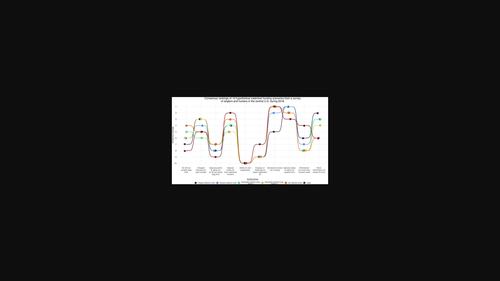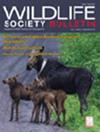An examination of scenarios to increase waterfowl hunting participation
IF 1.5
4区 环境科学与生态学
Q3 Environmental Science
引用次数: 0
Abstract
Abstract Since the 1970s, waterfowl hunting participation has declined in the United States, which has resulted in socioeconomic consequences for waterfowl conservation and management. Attempts to increase the waterfowl hunter population have been difficult, partly due to social factors (e.g., constraints, motivations, demographics) influencing who participates, frequency of participation, and diversity of desired outcomes from hunting experiences. We examined the preferences of 10 potential management options by hunters and anglers from several states in the central U.S. during 2018. Respondents were grouped into the following activity groups based on responses to survey questions: frequent waterfowl hunters, sporadic waterfowl hunters, previous waterfowl hunters, hunters (never hunted waterfowl), and nonhunters (anglers who have never hunted). All ordinal models indicated that the ability of the scenario to increase participation significantly ( P < 0.05) depended on the activity group. Scenarios, including Having someone to take the respondent hunting (probability of increasing participation > 0.35 for all activity groups) and Special areas for new waterfowl hunters, had the greatest indication (probability > 0.40) of increased waterfowl hunting participation across activity groups. Frequent and sporadic waterfowl hunters ranked Special areas to allow for a quality hunt highest, while hunters and non‐hunters ranked Someone to take me hunting as the most preferred scenario. Information for what new/inexperienced hunters need, Classes or materials to teach waterfowl ID, and Ability to rent equipment were scenarios consistently ranked as the lowest for all activity groups. Our research underscores that only some of the scenarios had the same appeal to all activity groups, which implies a need for a greater diversity of experiences in the landscape of public waterfowl hunting access. Also, continued promotion of current waterfowl hunters taking new or inexperienced individuals may increase waterfowl hunting participation.

对增加水禽狩猎参与的方案进行审查
自20世纪70年代以来,美国水禽狩猎的参与率有所下降,这对水禽的保护和管理造成了社会经济后果。增加水禽猎人数量的努力一直很困难,部分原因是社会因素(例如,限制、动机、人口统计)影响了谁参与、参与的频率以及从狩猎经验中获得的期望结果的多样性。我们研究了2018年美国中部几个州的猎人和垂钓者对10种潜在管理方案的偏好。根据对调查问题的回答,受访者被分为以下活动组:频繁的水禽猎人、零星的水禽猎人、以前的水禽猎人、猎人(从未狩猎过水禽)和非猎人(从未狩猎过的垂钓者)。所有有序模型都表明,情景显著增加参与的能力(P <0.05),取决于活动组。场景,包括有人带受访者打猎(增加参与的概率>所有活动组0.35)和新水禽猎人的特殊区域具有最大的指示(概率>在不同的活动组中,水禽狩猎的参与增加了0.40)。频繁和零星的水禽猎人将特殊区域评为最高,而猎人和非猎人将有人将我狩猎作为最首选的场景。关于新手/没有经验的猎人需要什么信息,教授水禽识别的课程或材料,以及租用设备的能力,这些都是所有活动组中排名最低的场景。我们的研究强调,只有一些场景对所有活动群体具有相同的吸引力,这意味着需要在公共水禽狩猎通道的景观中提供更多样化的体验。此外,继续促进现有的水禽猎人吸收新的或没有经验的个人可能会增加水禽狩猎的参与。
本文章由计算机程序翻译,如有差异,请以英文原文为准。
求助全文
约1分钟内获得全文
求助全文
来源期刊

Wildlife Society Bulletin
BIODIVERSITY CONSERVATION-
CiteScore
2.10
自引率
13.30%
发文量
0
期刊介绍:
The Wildlife Society Bulletin is a journal for wildlife practitioners that effectively integrates cutting edge science with management and conservation, and also covers important policy issues, particularly those that focus on the integration of science and policy. Wildlife Society Bulletin includes articles on contemporary wildlife management and conservation, education, administration, law enforcement, and review articles on the philosophy and history of wildlife management and conservation. This includes:
Reports on practices designed to achieve wildlife management or conservation goals.
Presentation of new techniques or evaluation of techniques for studying or managing wildlife.
Retrospective analyses of wildlife management and conservation programs, including the reasons for success or failure.
Analyses or reports of wildlife policies, regulations, education, administration, law enforcement.
Review articles on the philosophy and history of wildlife management and conservation. as well as other pertinent topics that are deemed more appropriate for the Wildlife Society Bulletin than for The Journal of Wildlife Management.
Book reviews that focus on applied research, policy or wildlife management and conservation.
 求助内容:
求助内容: 应助结果提醒方式:
应助结果提醒方式:


